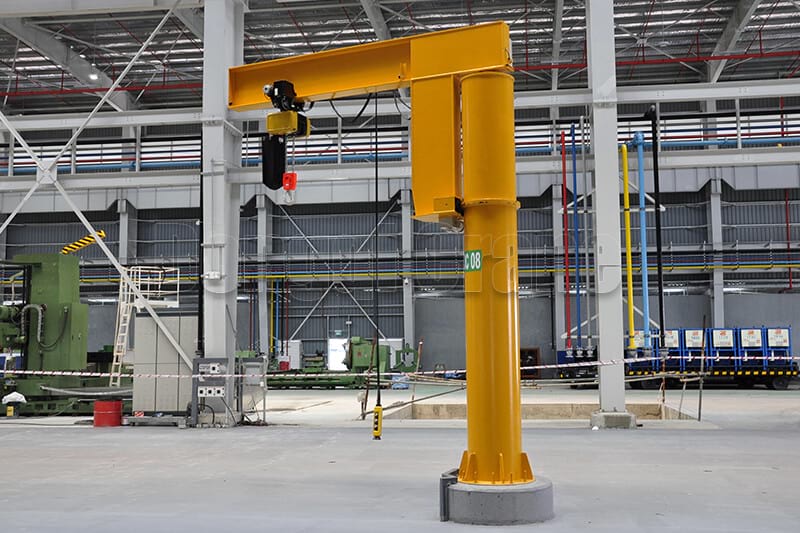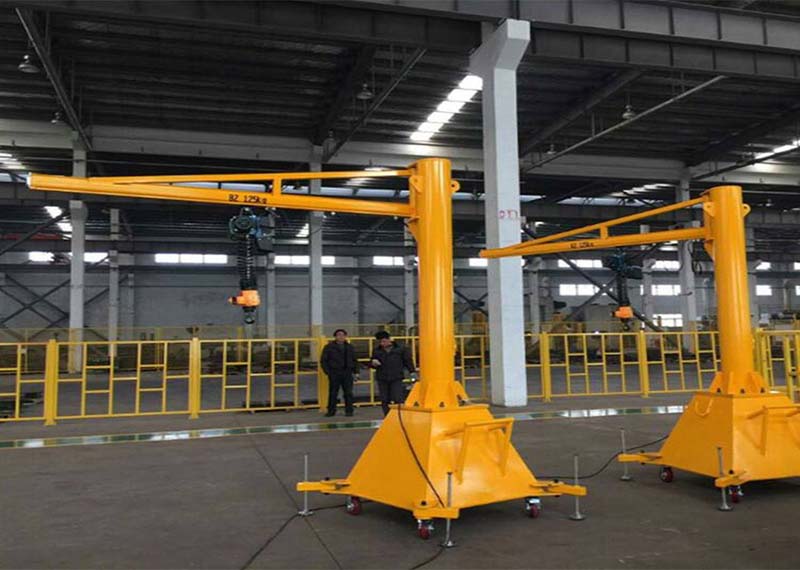Recently, our customer asked for a column-type jib crane to be sent to Australia. During the communication process, the customer was confused about the wall-type and column-type jib cranes, so how to choose a suitable jib crane?
Features of wall type jib crane and column jib cranes

Makes operation easier; makes operation safe; easy to assemble; complete scope of supply (including complete electrical installation) main power switch lockable movable column cantilever crane (up to 500kg) as this crane is easily suitable for new It is an ideal solution for those who need to change the workplace frequently, and the cantilever crane is especially suitable for maintenance or work that requires frequent changes.
KBK column type cantilever crane (up to 1000kg) KBK column type cantilever crane is an independent and ideal station crane. KBK column type cantilever crane has light weight, large lifting capacity, long cantilever and small footprint. Fixing methods such as bolts or pre-embedded anchor bolts. KBK Column Type jib Crane Low Headroom Design The low headroom design of the cantilever crane is 290mm lower than the height of the standard design. Therefore, for the case of small space and high lifting height requirements
Column jib crane (up to 1000kg) is a more efficient double cantilever column jib crane compared to single cantilever column jib crane. D-JB column type cantilever crane (up to 10000kg) H/I type steel cantilever crane is characterized by larger load and longer cantilever service area, low headroom cantilever crane can provide greater lifting height, it can also provide electric Cantilever swivel function for easy operation.
Wall-mounted cantilever crane (up to 1000kg) Since the wall-mounted cantilever crane is installed on a supporting concrete wall, column or other load-bearing components, its decisive advantage is to save space for the ground column. It is easy to install and saves on ready-made standardized brackets with a lot of complicated correction work, KBK wall-mounted cantilever crane is suitable for a load range up to 1000kg. The cantilever crane with low headroom design is 290 mm lower than the standard design’s own height.

Jib beam design for jib cranes
The main girder of the cantilever crane is designed according to three-dimensional prestressing, the bottom plate is 6m wide, and the wing plate is 2.5m wide. Two transverse diaphragms are installed at the 0# beam section, and one transverse diaphragm is installed at the end of the side span. Longitudinal prestressing sets the roof beam, bottom plate beam and web beam respectively, which are respectively composed of 12Φj15.24 and 9Φj15.24 steel hinge lines, and both ends are symmetrically tensioned at the same time; It is composed of single-ended tensioning; the vertical prestressing adopts Φ32mm high-strength fine-rolled thick steel bar. The standard strength of the cantilever crane steel hinge line is Ryb=1860MPa, and the OVM anchorage is used, and the pipe is designed as a metal bellows; the standard strength of the thick steel bar is Ryb=785MPa, and the YGM anchorage is used.
A bridge with a length of 120m and a width of 12m is a prestressed concrete continuous T-shaped steel bridge. The main beam adopts a single-box single-chamber variable-height concrete box section, the beam height at the main pier is 4.2m, and the beam height at the mid-span is 2.1m. The upper and lower edges of the bottom plate all change according to a quadratic parabola. The technology of the part is SL6400A light passenger car rear door outer panel, the structural size is relatively large, the rear license plate lamp is fixed on the slope in the middle of the part with three 8mm and two 30mm holes, and the hole has been drilled by hand for several years. It consumes a lot.
For the movement of the cantilever hanger beam crane, the past practice is to lay short sleepers horizontally on the upper chord of the steel beam and then nail the steel rails, and each time the crane moves, it must be dismantled one by one and laid forward. In this way, even if the winding part is fully covered with scaffolding, it is still very unsafe, and the labor intensity is high and time-consuming. It takes a work shift of about 8 hours to complete each station (8m) moving, and it takes up a beam 1/6-1/5 of the time (for bridges with a span of 60-80m).
The cantilever crane vertically sets the column on the front end cover of the press through bolts. The top of the column is a cylindrical section. The two bearings are interferingly fitted, the pulley is set in the chute of the cantilever and moves along the chute, and the chain hoist is set at the lower end of the chute.

No Responses